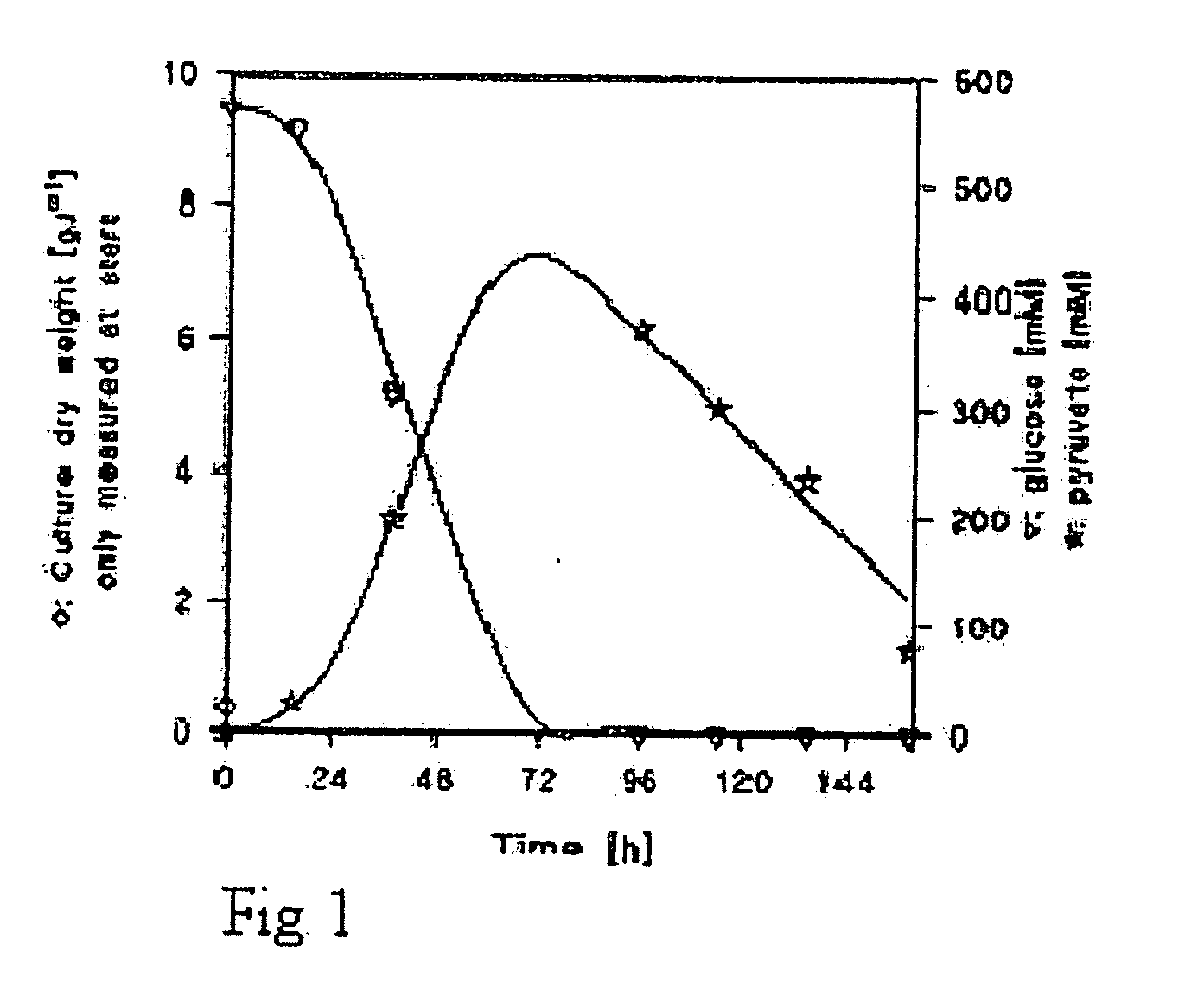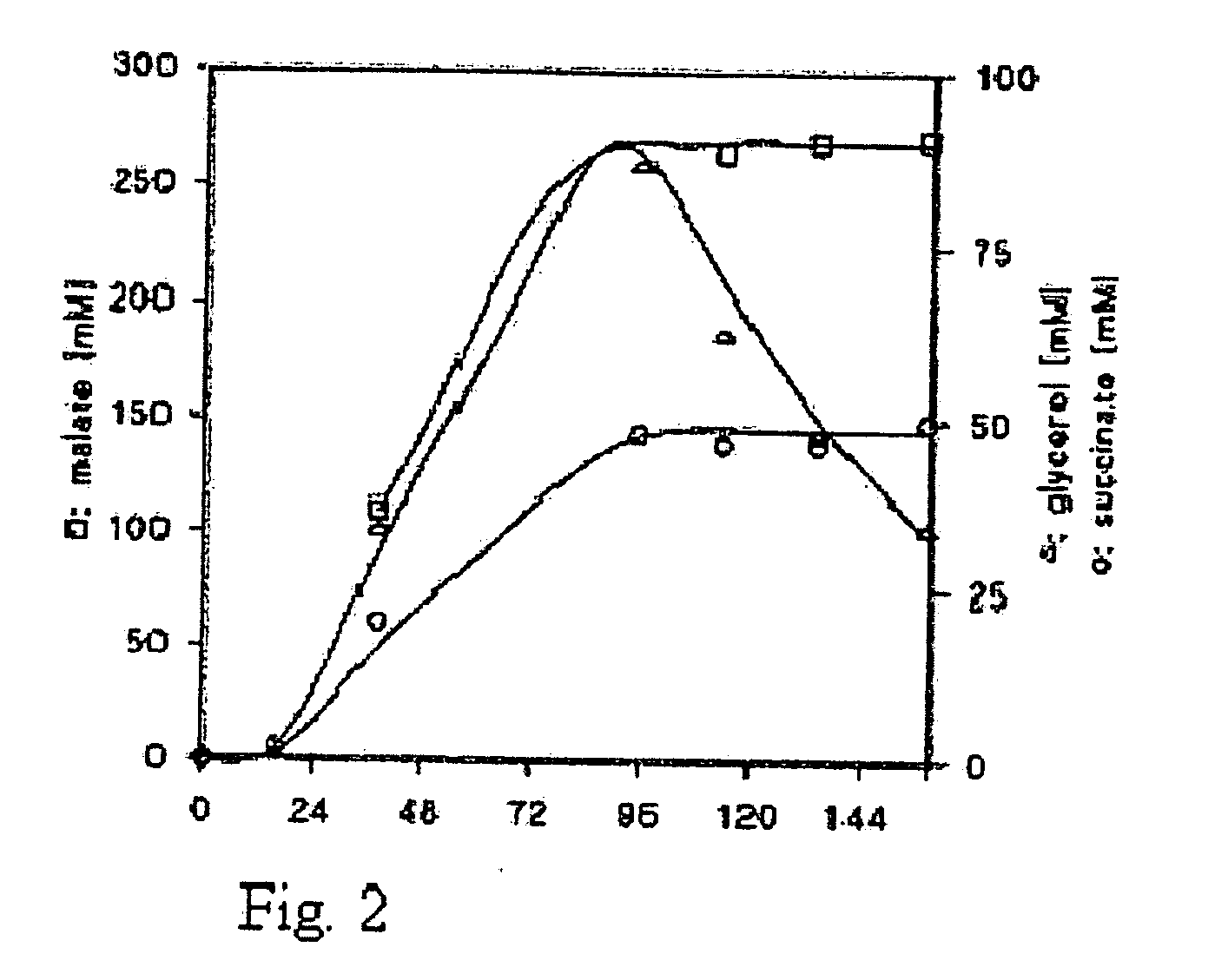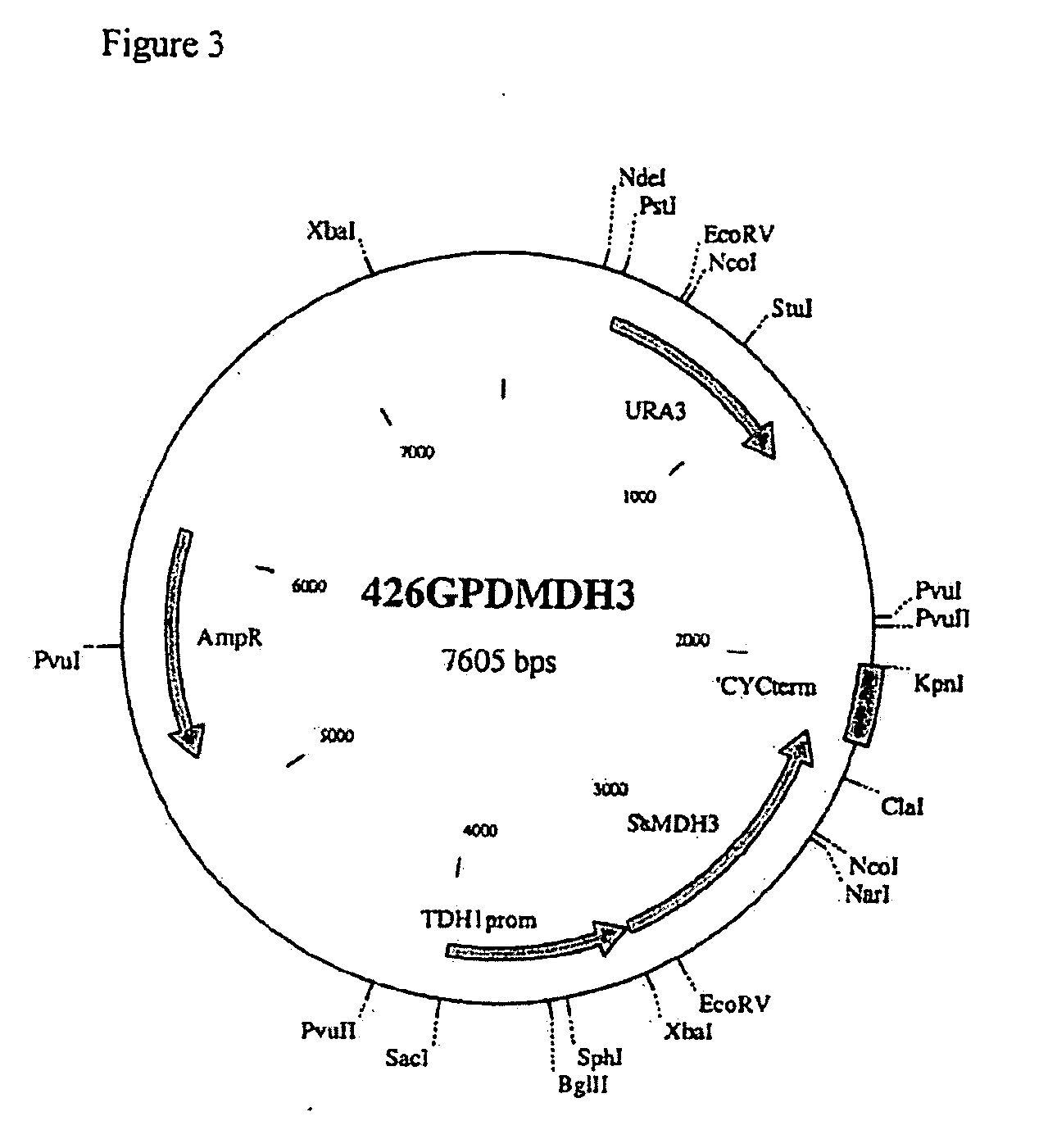Malic acid production in recombinant yeast
a technology of malic acid and recombinant yeast, which is applied in the field of malic acid production in recombinant yeast, can solve the problems of malic acid, an organic acid that has been difficult to produce from yeast, and achieve the effects of increasing the activity of mdh polypeptides, and increasing the activity of pyc polypeptides
- Summary
- Abstract
- Description
- Claims
- Application Information
AI Technical Summary
Benefits of technology
Problems solved by technology
Method used
Image
Examples
example 1
Construction of Useful Yeast Strains
[0161]Two yeast strains were constructed starting with S. cerevisiae strain TAM (MATa pdc1(-6,-2)::loxP pdc5(-6,-2)::loxP pdc6(-6,-2)::loxP ura3-52 (PDC-reduced)), which was transformed with genes encoding a pyruvate carboxylase (PYC), a malate dehydrogenase (MDH), and an organic acid transport (MAE) polypeptide.
[0162]Because the TAM strain has only one. auxotrophic marker, we disrupted the TRP1 locus in order to be able to introduced more than one plasmid with an auxotrophic marker, resulting in RWB961 (MATa pdc1(-6,-2)::loxP pdc5(-6,-2)::loxP pdc6(-6,-2)::loxP mutx ura3-52 trp1::Kanlox).
[0163]The MDH and PYC genes we used had been previously cloned into plasmids p426GPDMDH3 (2μ plasmid with URA3 marker, containing the MDH3ΔSKL gene between the S. cerevisiae TDH3 promoter and the S. cerevisiae CYC1 terminator, FIG. 3) and pRS2 (2μ plasmid with URA3 marker containing the S. cerevisiae PYC2 gene, FIG. 4).
[0164]A PTDH3-SpMAE1 cassette carrying the S...
example 2
Effect of Carbon Dioxide on Malate Production
[0174]The effect of carbon dioxide on malate production in a fermenter system was studied using a TAM strain overexpressing Pyc2, cytosolic Mdh3, and a S. pombe Mae1 transporter (YEplac112SpMAE1), as described in Example 1. Three fermenter experiments were performed:
[0175]A: Batch cultivations under fully aerobic conditions.
[0176]B: Batch cultivations under fully aerobic conditions with a mixture of N2 / O2 / CO2 of 70% / 20% / 10%.
[0177]C: Batch cultivations under fully aerobic conditions with a mixture of N2 / O2 / CO2 of 65% / 20% / 15%.
[0178]Protocol
[0179]Media
[0180]The mineral medium contained 100 g glucose, 3 g KH2PO4, 0.5 g MgSO2.7H2O and 1 ml trace, element solution according to Verduyn et al (Yeast 8: 501-517, 1992) per liter of demineralized water. After heat sterilization of the medium 20 min at 110° C., 1 ml filter sterilized vitamins according to Verduyn et al (Yeast 8: 501-517, 1992) and a solution containing 1 g urea were added per liter. ...
example 3
Preparation Cell-Free Extracts for Enzyme Determinations
[0204]The enzyme samples were obtained from cells growing in chemostat or from shake flasks. When the sample was obtained from shake flask for cells that did not grow on glucose these were first pre-grown on mineral medium with ethanol after which they were transferred to mineral medium with glucose. For preparation of cell extracts, 62.5 mg of biomass were harvested by centrifugation (5 min at 5000 rpm), washed once and re-suspended in 5 ml freeze buffer (10 mM potassium phosphate buffer (pH 7.5) containing 2 mM EDTA). These samples were stored at −20° C. Before preparation of cell extracts, samples were thawed, washed once and re-suspended in 4 ml sonication buffer (100 mM potassium-phosphate buffer (pH 7.5) containing 2 mM MgCl2 and 1 mM dithiothreitol). Prior to sonication, a teaspoon of glass beads (425-600 μm diameter) was added. Extracts were prepared by sonication in a Sanyo Soniprep 150-sonicator using a 7-8 μm peak-to...
PUM
| Property | Measurement | Unit |
|---|---|---|
| volume | aaaaa | aaaaa |
| pH | aaaaa | aaaaa |
| temperature | aaaaa | aaaaa |
Abstract
Description
Claims
Application Information
 Login to View More
Login to View More - R&D
- Intellectual Property
- Life Sciences
- Materials
- Tech Scout
- Unparalleled Data Quality
- Higher Quality Content
- 60% Fewer Hallucinations
Browse by: Latest US Patents, China's latest patents, Technical Efficacy Thesaurus, Application Domain, Technology Topic, Popular Technical Reports.
© 2025 PatSnap. All rights reserved.Legal|Privacy policy|Modern Slavery Act Transparency Statement|Sitemap|About US| Contact US: help@patsnap.com



